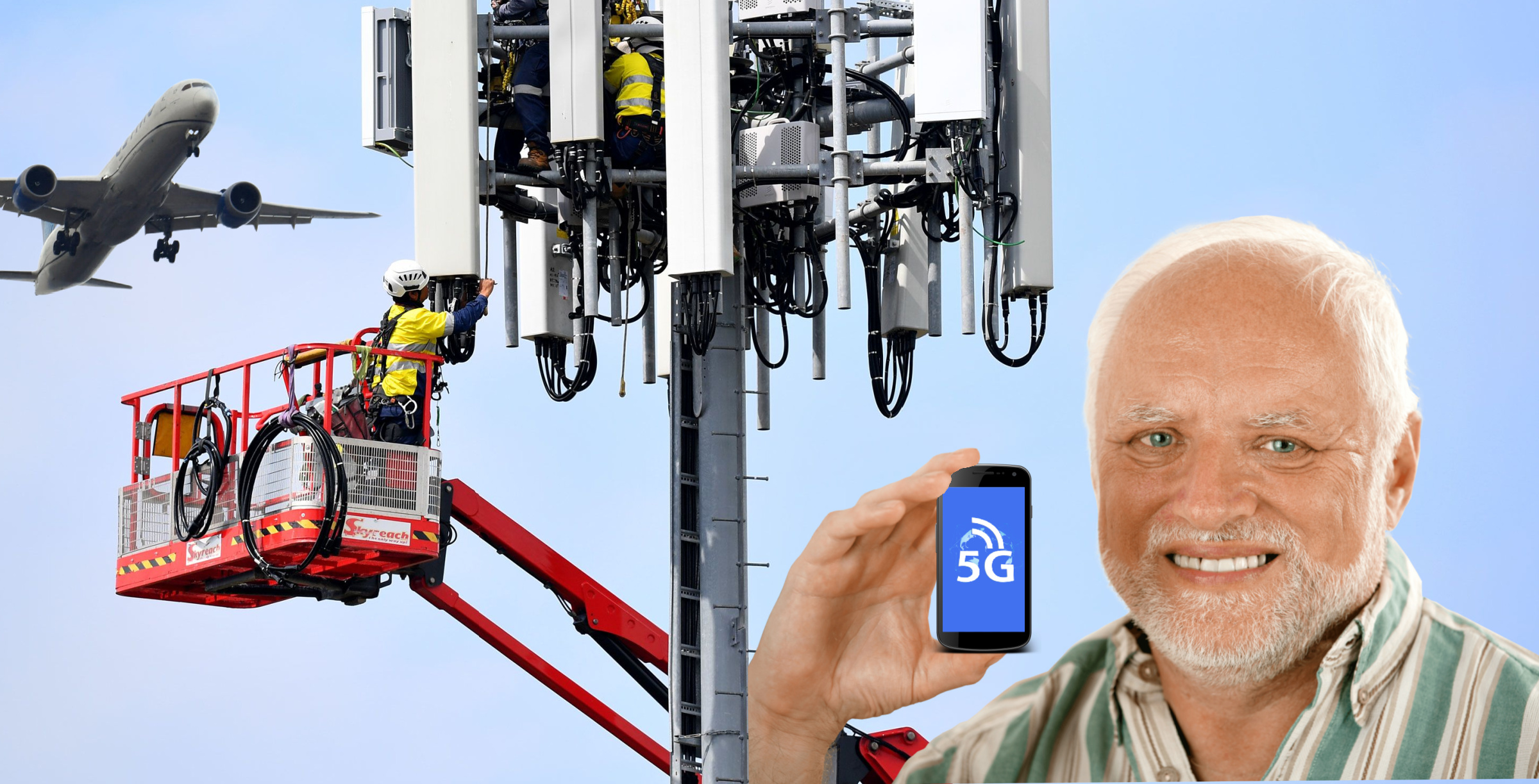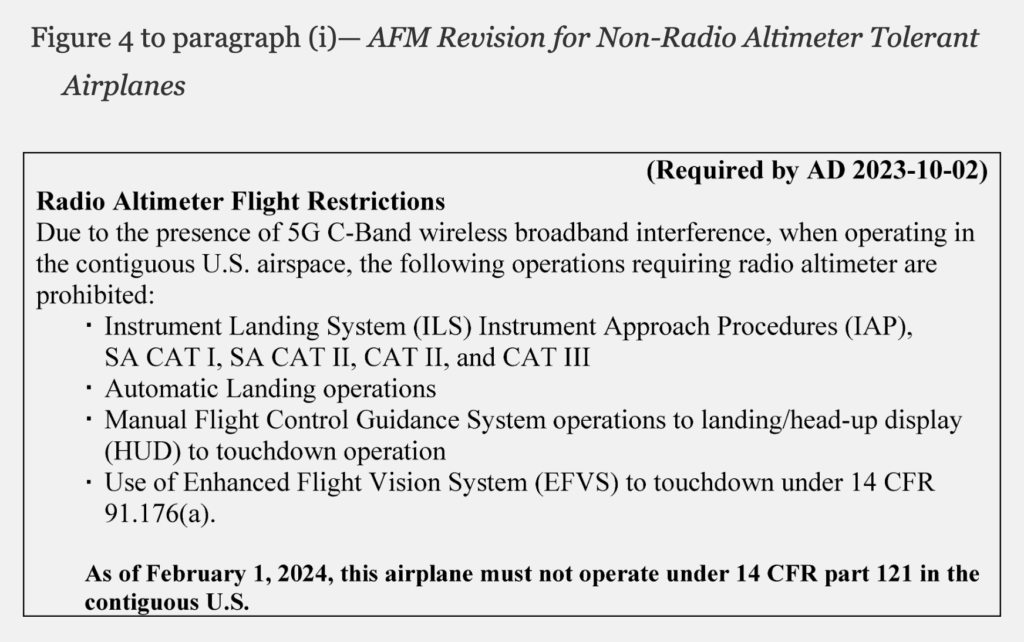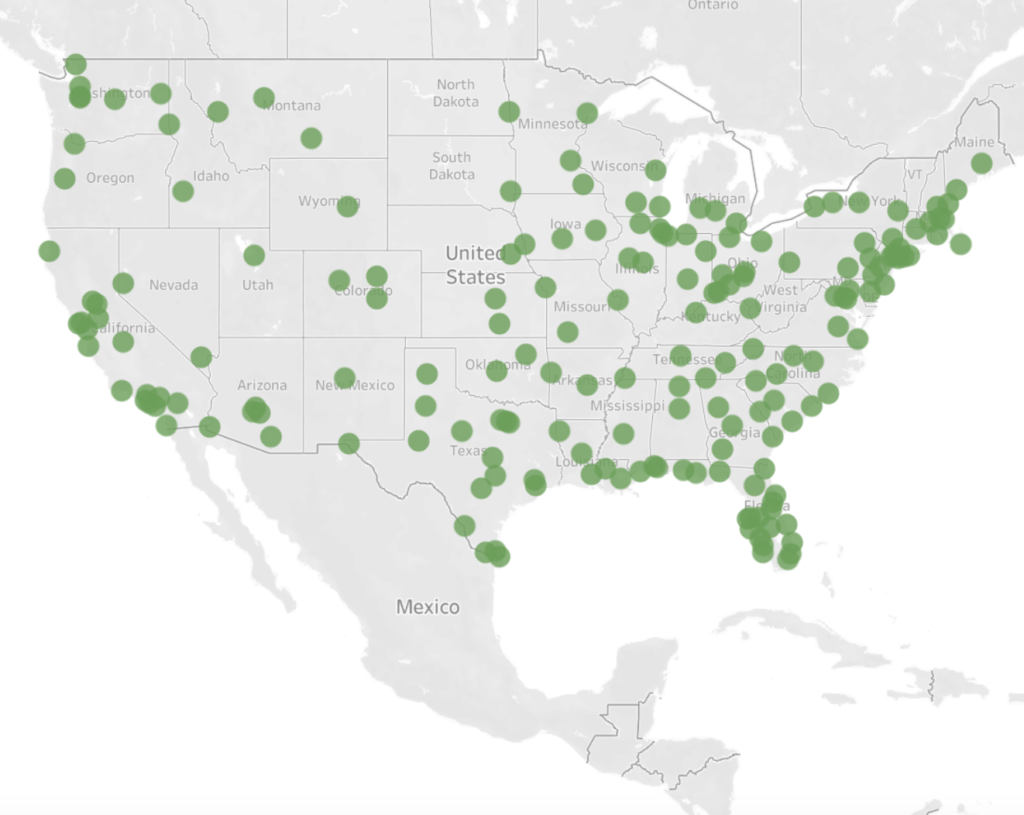Telecoms firms will be rolling out 5G near major US airports from July 1, 2023. Most aircraft need to upgrade their radio altimeters by this date to continue certain operations, and the FAA has said it will not be extending the deadline.
What do you mean by “certain operations”?
These ones:
- Special Authorization CAT I, CAT II and above approaches.
- Auto-landings.
- Head-up display landings.
- Enhanced vision systems through touchdown.
For ease of reference, we’re going to call these “fancy landings” for the rest of this article.
What do you mean by “most aircraft”?
Aircraft that need to do this are “Transport and Commuter Category Airplanes.” Just like it says in the FAA rules!
What FAA rules?
The initial set of rules (Airworthiness Directive 2021-23-12) was published in Dec 2021. But that got superseded in May 2023 (right at the death, with only 1.5 months to go until the July 1st deadline!) with Airworthiness Directive 2023-10-02. This really is the place to go to find answers to all questions.
The rules set two deadlines:
July 1, 2023: All transport and commuter category airplanes, regardless of the type of operation (Part 91, Part 135, Part 121), will be prohibited from performing these fancy landings at any US airport unless they have upgraded their radio altimeters. Aircraft without upgraded radio altimeters will be able to operate into any airport, but cannot fly the fancy landings.
Feb 1, 2024: US aircraft operating under Part 121 need to have upgraded their radio altimeters to be able to operate anywhere in the contiguous US.
What are “transport and commuter category airplanes”?
Commuter Airplanes = multi-engine, max pax seats 19, max takeoff weight of 19,000lbs. If you have more than 19 seats, or you’re heavier than 19,000lbs, that makes you a Transport Airplane.
So this basically means everyone.
EVERYONE everyone? Or just N-reg aircraft?
Yeah ok, not EVERYONE everyone. The rules only apply to N-reg aircraft.
So, technically, if you’re not N-reg you can carry on flying the fancy landings in the US after July 1st even if you haven’t upgraded your radio altimeter. But that’s probably not a great idea, because the 5G interference is still going to be an issue for you!
As the FAA says in the rules (in response to no fewer than eleven foreign airlines who asked this very same question):
“Under ICAO Annex 8, Airworthiness of Aircraft, the state of registry of an airplane is the state responsible for its airworthiness. For this reason, FAA ADs apply only to U.S.-registered airplanes. To the extent the FAA's bilateral partners agree with the FAA's finding of an unsafe condition in U.S. airspace, the FAA encourages those authorities to adopt the FAA AD or similar requirements as mandatory continuing airworthiness instructions for airplanes registered in other countries. The FAA also plans to publish information in the FAA's Aeronautical Information Publication to alert international operators to the 5G C-Band situation in the U.S., including the agency's use of Domestic Notices. The FAA strongly urges operators of foreign-registered airplanes to voluntarily comply with the actions required by this AD when operating in the contiguous U.S. given the unsafe condition affects their airplanes as much as the airplanes subject to this AD.”
What if I don’t care about these fancy landings?
If you’re N-reg but don’t have approvals to do these fancy landings, you don’t need to worry – no radio altimeter upgrade is required.
Before July 1st, just stick this table into your AFM, and you’re done:
Which airports are affected?
Right now, there are almost 200 US airports with 5G interference issues. The FAA has an interactive map of them all here, where you can check all the restrictions for each one.
This list of airports is probably going to increase after July 1st, as more 5G towers are installed across the country.
What’s the backstory to all this? Please make it short
In Dec 2021, the FAA had concerns about 5G networks interfering with aircraft radio altimeters due to similar frequencies. They banned fancy landings at some airports, issued some guidelines, and allowed some exemptions. In the end, a deal was made to delay activation near major airports, initially until July 2022 but extended to July 2023.
Where can I find more info?
- Really, truly, head here first for the FAA rules on all this, to get it from the horse’s mouth.
- Then if you’re still keen, you can check here for the FAA website on all things 5G.
- And also here for a recent webinar by AIN on the impact of 5G, with a focus on bizav.
- Then finally here for the most recent special airworthiness information bulletin issued by the FAA on 24th May 2023, where they’re basically asking manufacturers and operators to continue assessing the whole 5G issue and report back to them their findings.
More on the topic:
- More: US: 5G Rollout Near Airports Delayed Until 2023
- More: US 5G Roll Out: Launch Day, More Delays, New Notams and FAA Buffers
- More: Is the 5G rollout a new threat to aircraft safety?
- More: GPS U/S in the US
More reading:
- Latest: Venezuela & Caribbean Airspace Update
- Latest: ReFuelEU: Europe’s new anti-tankering rules explained
- Latest: US CBP biometrics: BizAv rollout still unclear
- Safe Airspace: Risk Database
- Weekly Ops Bulletin: Subscribe
- Membership plans: Why join OPSGROUP?













 Get the famous weekly
Get the famous weekly 






Really only in the 48 contiguous states?? Are there no 5G C-band interference concerns in Alaska or Hawaii? I have to imagine there are 5G C-band installations there, but perhaps not near enough to airports to be a concern. Are “fancy landings” allowed there without restriction?
Also, “non-radio altimeter tolerant aircraft” is a bit of a misnomer. In plain English, that phrase sounds like aircraft that can’t tolerate radio altimeters! IMHO, it would be better to call them “aircraft without 5G C-band tolerant radio altimeters.”
Yep, that seems to be what the regs say about the whole no-Alaska-or-Hawaii thing.